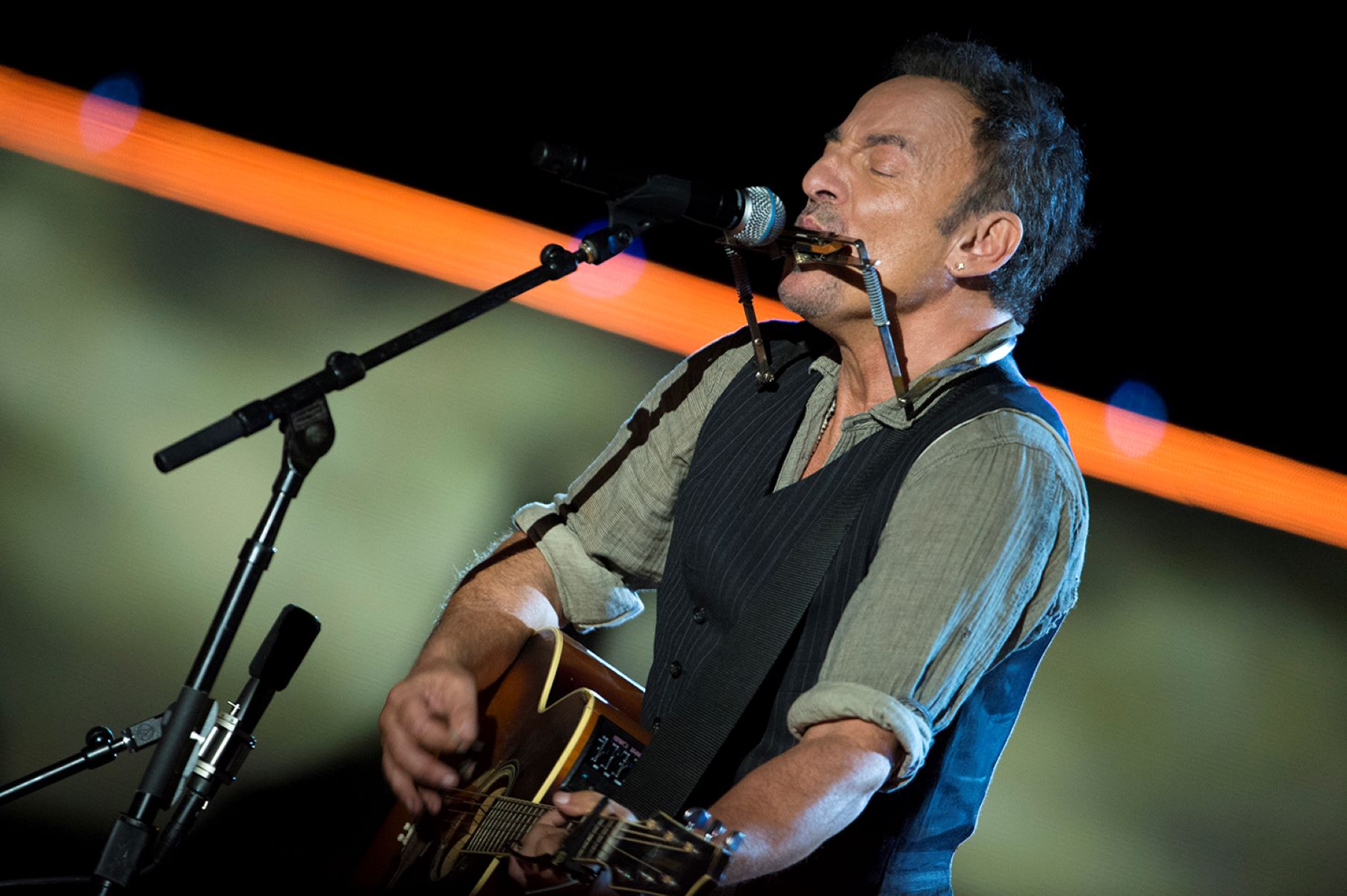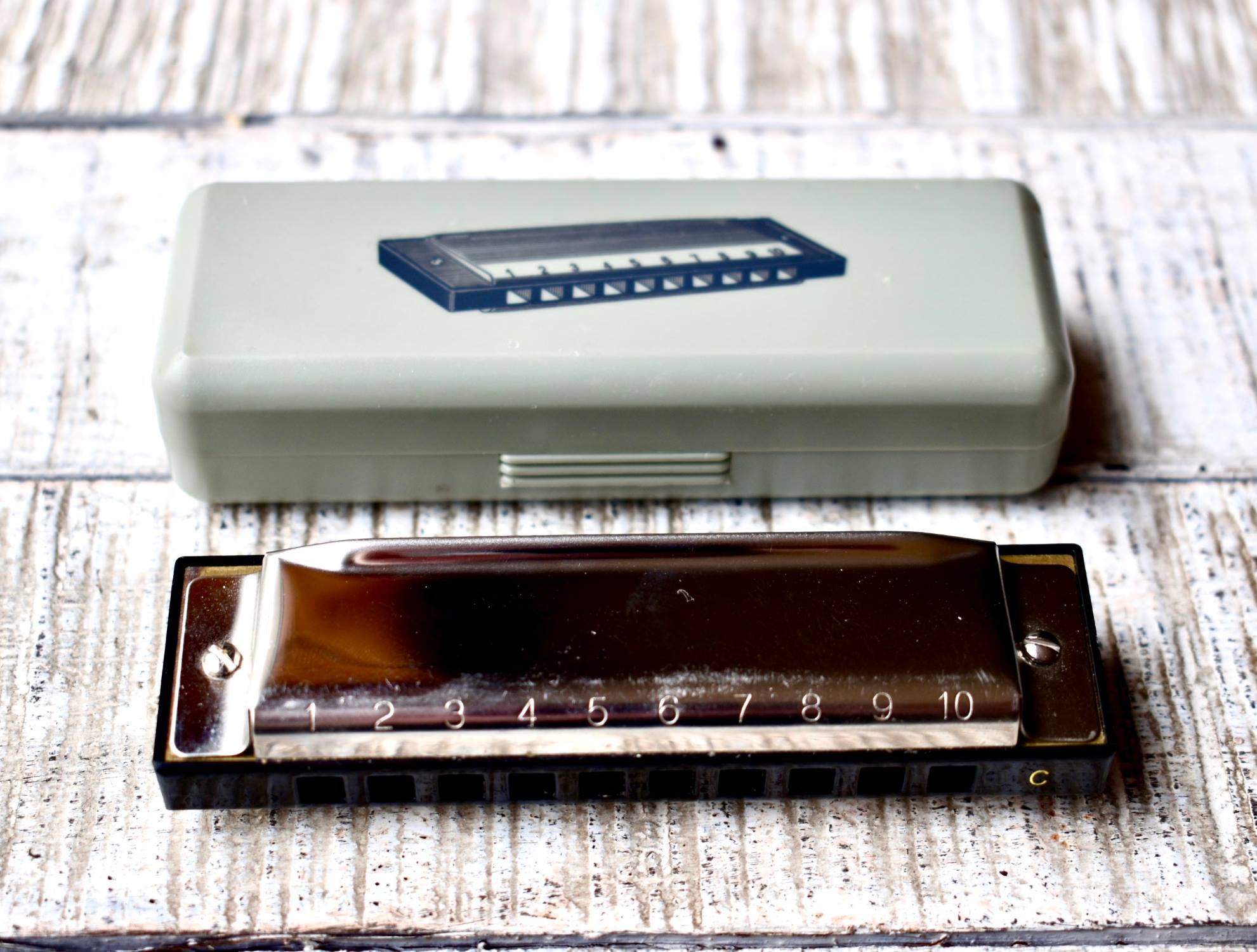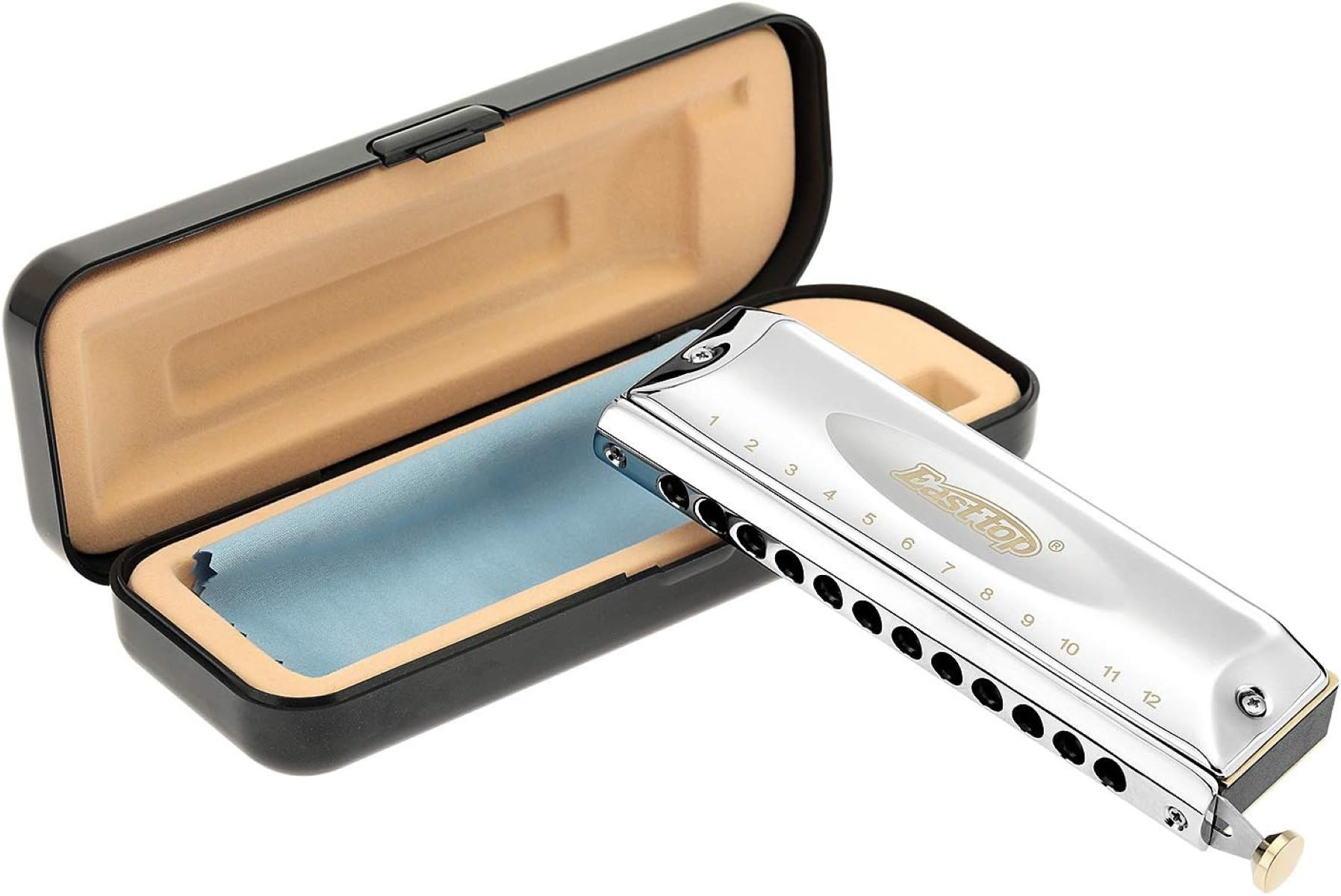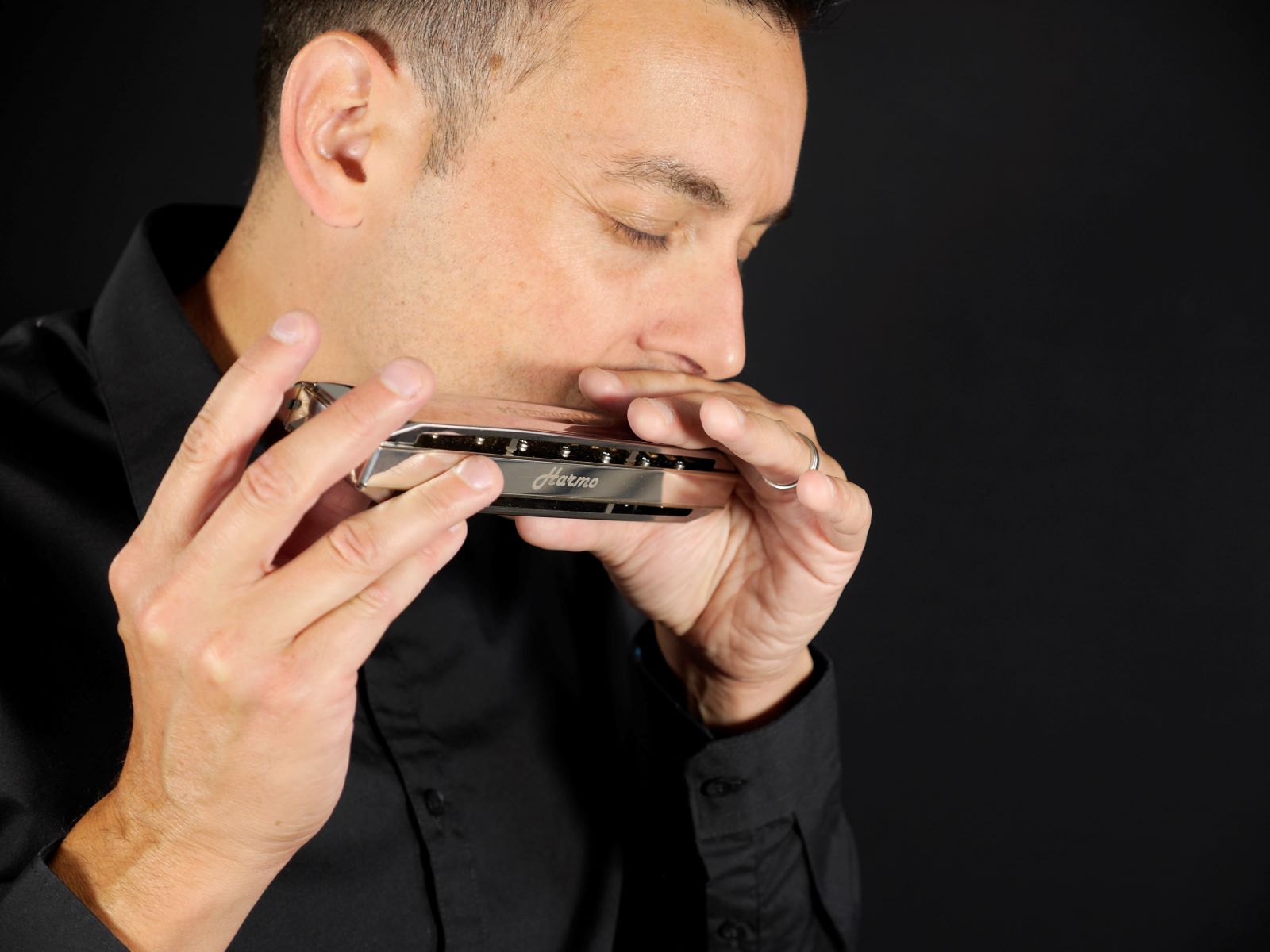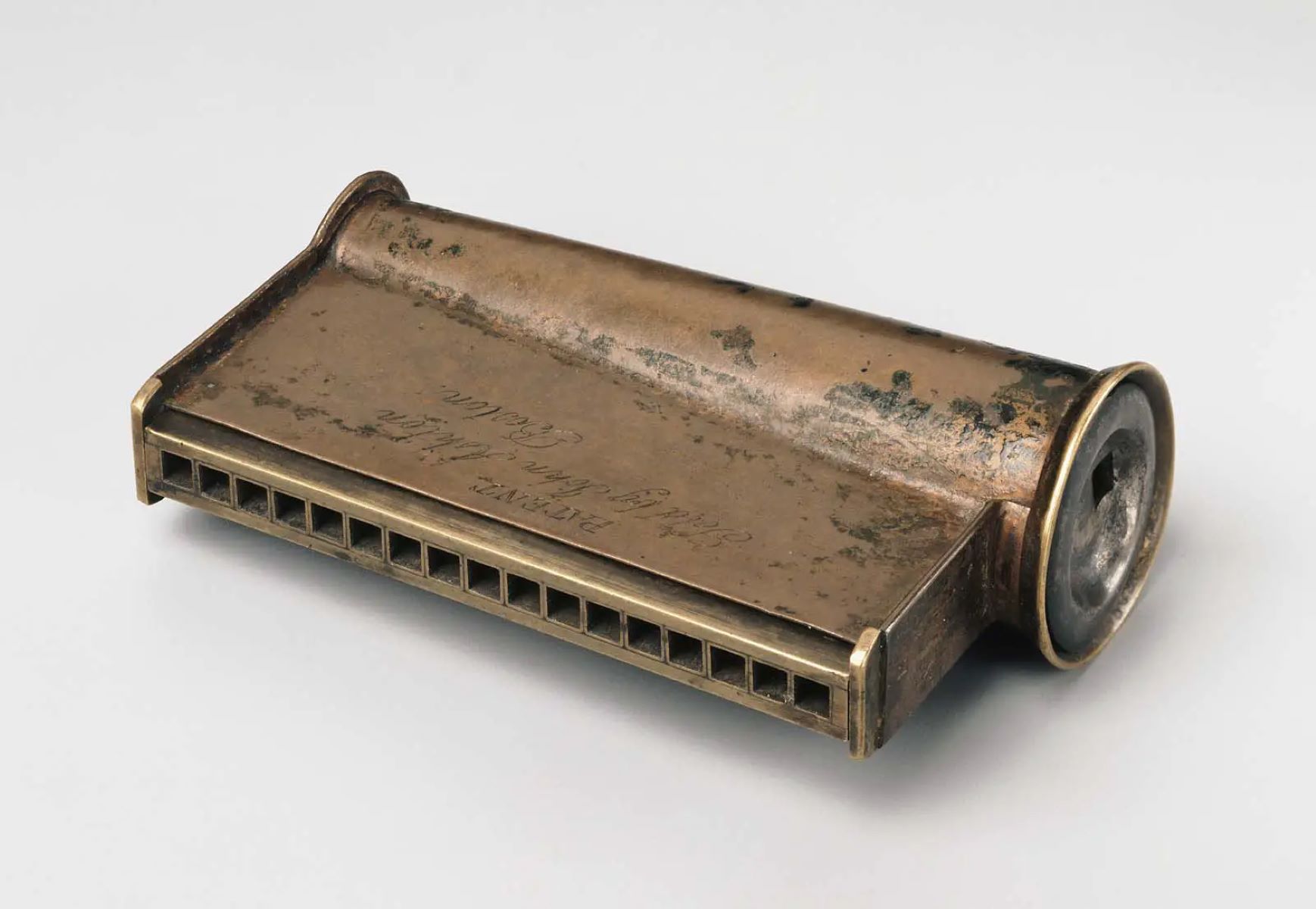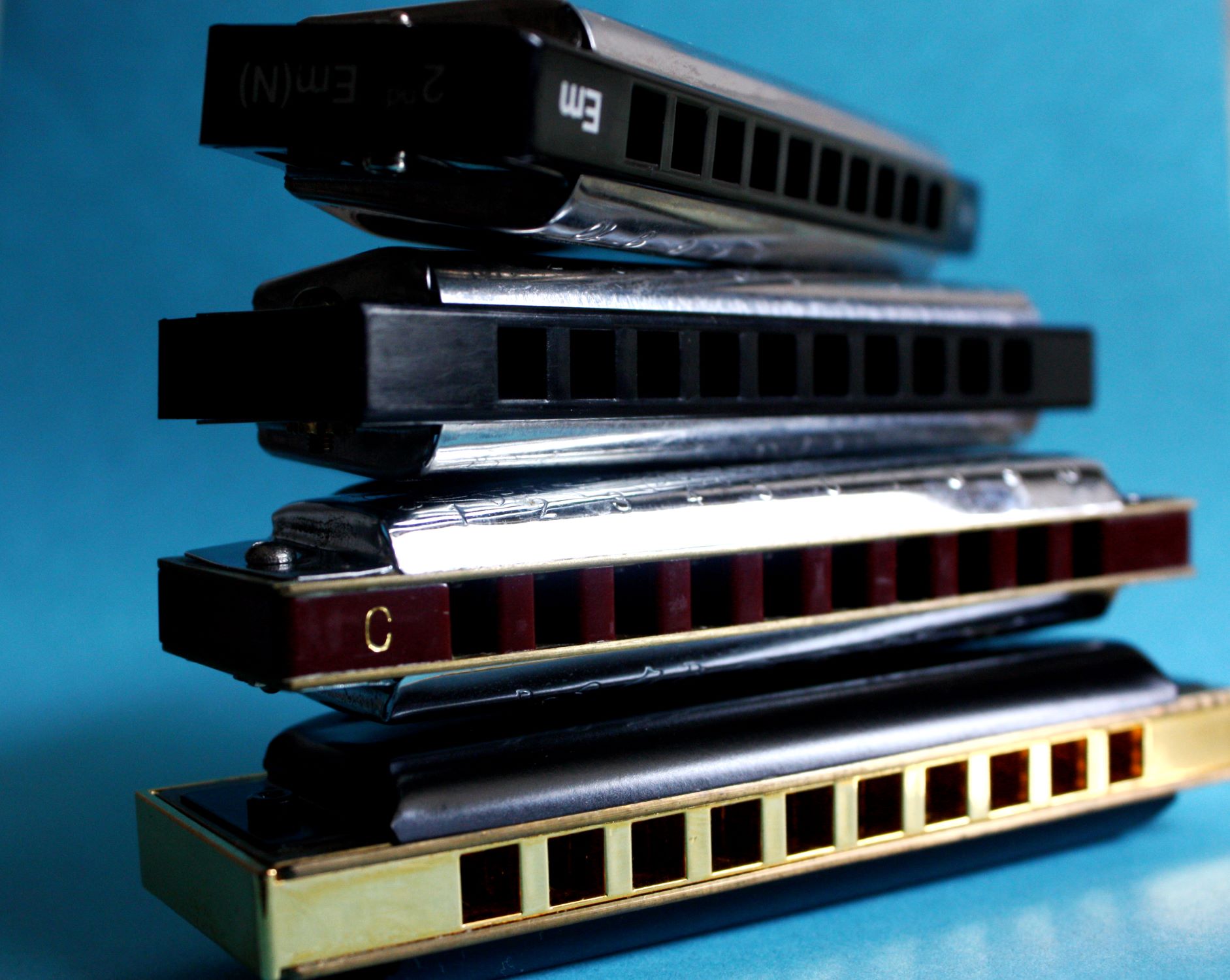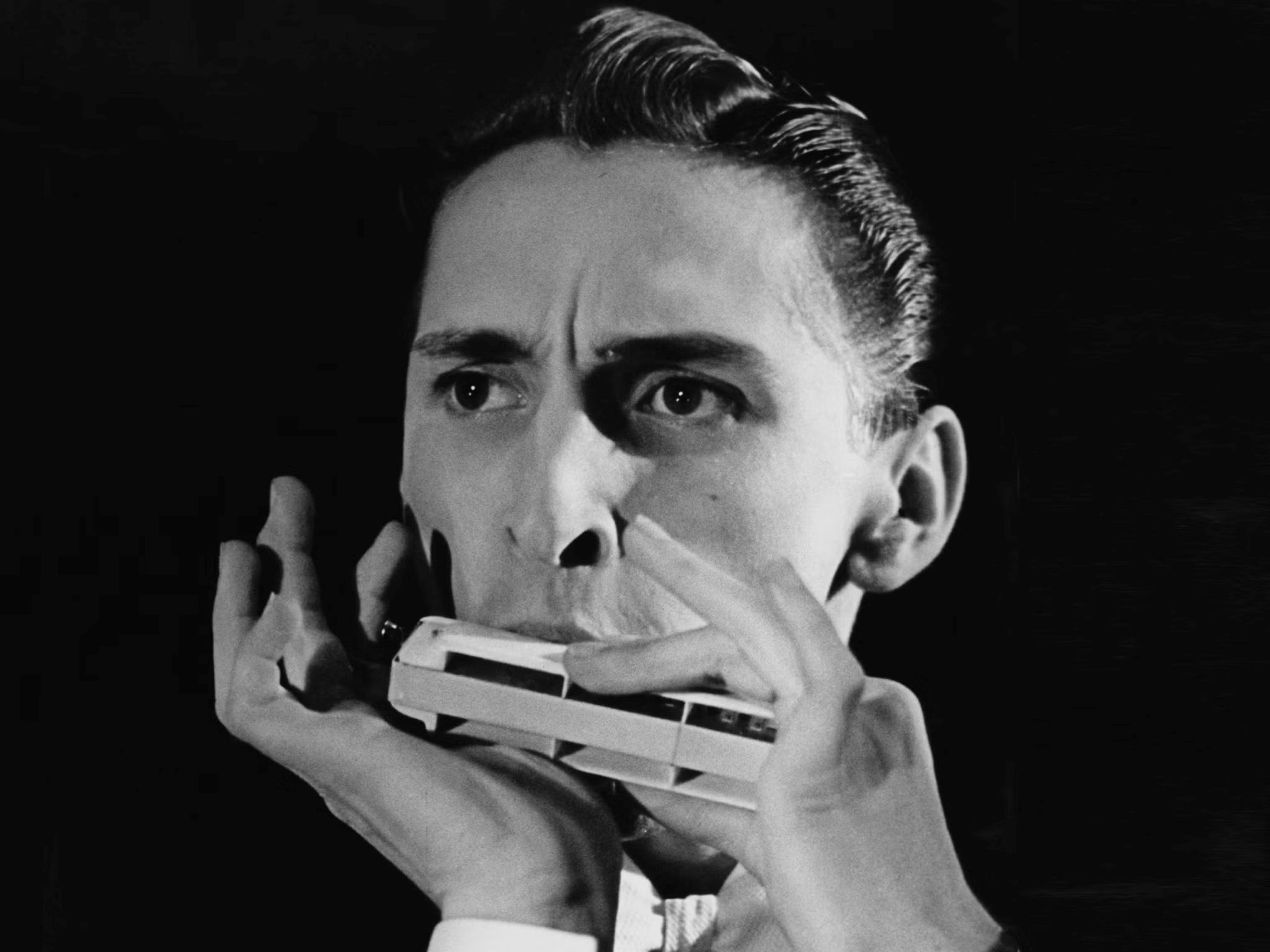Home>Instruments>Harmonica>What Is A Diatonic Harmonica


Harmonica
What Is A Diatonic Harmonica
Published: February 3, 2024
Discover what a diatonic harmonica is and how it can enhance your musical journey. Learn the basics and explore various genres with this versatile instrument. Perfect for harmonica enthusiasts and beginners alike.
(Many of the links in this article redirect to a specific reviewed product. Your purchase of these products through affiliate links helps to generate commission for AudioLover.com, at no extra cost. Learn more)
Table of Contents
Introduction
When it comes to musical instruments, the harmonica stands out as a unique and versatile choice. From blues to folk to rock, the harmonica has found its place in a wide range of musical genres. Among the various types of harmonicas, the diatonic harmonica is particularly popular and widely used by musicians around the world.
In this article, we’ll delve into the world of diatonic harmonicas, exploring their definition, structure, playing techniques, and common uses. Whether you’re a beginner looking to learn more about this instrument or an experienced player eager to deepen your knowledge, this guide is for you.
So, what exactly is a diatonic harmonica? Essentially, it is a type of harmonica that is tuned to play in a specific key. This unique feature sets it apart from other types of harmonicas, such as chromatic or tremolo harmonicas, which offer more flexibility in terms of playing in different keys.
The diatonic harmonica is known for its distinctive sound, characterized by its ability to produce both single notes and chords. It consists of multiple holes, each containing a reed that vibrates when the player blows or draws air through it. By manipulating their breathing and tongue placement, players can create a wide range of sounds and melodies.
With its portable size and rich tonal possibilities, the diatonic harmonica has become a staple in many musical genres. From the soulful blues harmonica riffs of Little Walter to the catchy folk tunes of Bob Dylan, the diatonic harmonica has made its mark on countless recordings and performances.
Whether you’re looking to play traditional blues, folk, country, or even rock music, the diatonic harmonica is an excellent choice that can add a unique and expressive element to your music.
In the following sections, we’ll explore the structure and components of a diatonic harmonica, how it works, popular playing techniques, common uses and styles, as well as tips for choosing and maintaining this exceptional instrument.
So, let’s dive in and discover the captivating world of the diatonic harmonica!
Definition of a Diatonic Harmonica
The diatonic harmonica is a small, handheld musical instrument consisting of a metal or plastic comb and multiple holes, each containing a reed. It is a type of harmonica that is specifically designed to play in a single key, unlike chromatic or tremolo harmonicas, which offer more flexibility in terms of key selection.
What sets the diatonic harmonica apart is its unique tuning. It follows the diatonic scale, which is a seven-note scale that includes five whole steps and two half steps, forming the foundation of many Western musical traditions. In most cases, diatonic harmonicas are tuned to play in a major key, such as C, D, E, or G, although other keys are also available.
The diatonic harmonica typically has ten holes, each representing a different note when blown or drawn. When a player blows into a hole, the reed vibrates to produce a single note, and when the player draws air through the hole, a different reed vibrates to produce another note. By alternating between blowing and drawing, players can create a melody or play chords.
One of the defining characteristics of the diatonic harmonica is its layout. The notes are arranged in a specific pattern, which may vary depending on the key of the harmonica. For example, in a C major diatonic harmonica, the bottom row contains the notes C, E, G, C, E, G, C, and the top row contains the notes D, F, A, B, D, F, A.
It’s important to note that due to the diatonic harmonica’s specific tuning, playing certain notes outside of the key may require bending or using other advanced playing techniques. This aspect adds a level of challenge and expressiveness to the instrument, allowing players to create unique sounds and techniques.
Overall, the diatonic harmonica is a versatile instrument that adds a distinct flavor to various genres of music, including blues, folk, country, and rock. It offers a range of possibilities for melodies, chords, and improvisation, making it a favorite among musicians and harmonica enthusiasts worldwide.
Structure and Components of a Diatonic Harmonica
The diatonic harmonica may appear deceptively simple, but it is a finely crafted instrument with various components that contribute to its unique sound and playability. Let’s explore the structure and components of a diatonic harmonica:
1. Comb: The comb is the main body of the harmonica, usually made of plastic, metal, or wood. It is responsible for holding the reeds and creating the chambers that produce sound. The comb provides stability and durability to the instrument.
2. Reed Plates: The reed plates are thin metal plates attached to the comb. Each reed plate contains multiple reeds, usually made of brass or phosphorous bronze. The reeds vibrate when air is blown or drawn through them, generating sound. The reeds are responsible for producing specific notes of the diatonic scale.
3. Holes and Channels: The comb contains multiple holes, usually ten in total, which are aligned with the reeds on the reed plates. Each hole corresponds to a specific note. Channels or chambers are created within the comb to direct the airflow to the desired reed when the player blows or draws air through a hole.
4. Covers: The covers are metal plates that encase the harmonica, protecting the reed plates and providing a smooth surface for the player’s mouth. The covers are usually made of stainless steel or brass. They have openings called slots that correspond to each hole, allowing the player’s breath to reach the reeds.
5. Mouthpiece: The mouthpiece is the area of the harmonica where the player places their mouth to blow or draw air. It is usually rounded and smooth for comfortable playing. The shape and size of the mouthpiece can vary slightly depending on the brand and model of the harmonica.
6. Comb Openings: The comb has small openings on the sides or ends, allowing for airflow and sound projection. These openings help create resonance and enhance the harmonica’s overall sound quality.
7. Reed Covers: Close to the tip of each reed, there are covers that protect the reeds from dust, moisture, and damage. These covers ensure that the reeds can vibrate freely and produce clear and distinct tones.
The combination of these components and their precise construction is essential for the diatonic harmonica’s functionality and tonal qualities. The instrument’s small size and ergonomic design make it highly portable and convenient for musicians to carry and play in various settings.
Next, we will explore how a diatonic harmonica works, uncovering the mechanics behind its unique sound and playability.
How a Diatonic Harmonica Works
The diatonic harmonica may seem like a simple instrument, but its inner workings are fascinating. Understanding how it produces sound can help you better appreciate the intricacies of playing this instrument. Here’s a breakdown of how a diatonic harmonica works:
1. Airflow: When a player blows or draws air through the holes in the harmonica, it causes the reeds within the instrument to vibrate. The airflow is controlled by the player’s breath and tongue placement, creating different tones and effects.
2. Reeds: The harmonica’s reeds are responsible for generating sound. Each reed consists of a thin strip of metal, typically brass or phosphorous bronze, that is fastened on one end and free to vibrate at the other. The length, thickness, and tension of the reed determine its pitch.
3. Valves or Windsavers: Diatonic harmonicas are equipped with valves or windsavers, which are thin pieces of material, such as plastic or leather, attached to one end of each reed. These valves allow the reeds to vibrate in only one direction, preventing them from making unwanted sounds when air passes through adjacent holes.
4. Chamber and Hole Configuration: The diatonic harmonica’s comb is designed with chambers and holes that direct the airflow to specific reeds. When a player blows air into a hole, it creates positive pressure in the chamber, causing the reed connected to that hole to vibrate and produce a specific note. Conversely, drawing air creates negative pressure and causes a different reed to vibrate.
5. Bends and Overblows: Advanced playing techniques, such as bending notes, enable harmonica players to produce notes outside the diatonic scale. By altering their embouchure, tongue position, and airflow, players can manipulate the reeds to produce microtonal variations and half-steps, expanding the tonal range of the instrument.
Overall, the diatonic harmonica’s mechanics rely on the precise and delicate balance between airflow, reed vibration, and chamber configuration. The player’s technique and control play a crucial role in harnessing the instrument’s full expressive potential and creating a wide range of musical effects and melodies.
Now that we’ve explored how the diatonic harmonica works, let’s dive into the various playing techniques that make this instrument so versatile and captivating.
Playing Techniques for a Diatonic Harmonica
The diatonic harmonica offers a multitude of playing techniques that allow musicians to create a diverse range of sounds, from soulful melodies to expressive bends. Whether you’re a beginner or an experienced player, exploring these techniques can greatly enhance your harmonica playing skills. Here are some of the most common techniques used on a diatonic harmonica:
1. Single Notes: One of the fundamental techniques is playing single notes. By puckering your lips and focusing the airflow into a single hole, you can produce clear and distinct notes. This technique is essential for playing melodies and creating precise musical phrases.
2. Chords: Diatonic harmonicas are not just for playing single notes; they can also produce chords. By blocking multiple holes with your tongue and blowing or drawing air across them, you can create beautiful harmonies and add depth to your playing. Chording techniques are commonly used in accompaniment and rhythm playing.
3. Bending Notes: Bending is a technique that allows you to alter the pitch of a note by manipulating the airflow and the shape of your mouth. By subtly changing the pressure and position of your tongue, you can create expressive bending effects, adding emotion and nuance to your playing. Bending is a skill that requires practice and can greatly expand the range of tones you can achieve on the diatonic harmonica.
4. Vibrato: Vibrato is a technique used to add a pulsating or wavering effect to a sustained note. It can be achieved by slightly altering the airflow and pitch of the note, creating a pleasing and expressive vibrato sound. Vibrato adds depth and emotion to your playing and is commonly employed in blues and jazz harmonica styles.
5. Tongue Blocking: Tongue blocking is a technique where you use your tongue to block specific holes while leaving others open. By selectively blocking holes, you can isolate individual notes while allowing adjacent holes to create chordal or drone effects. Tongue blocking is especially useful for playing melodies with a strong, resonant tone.
6. Overblows and Overdraws: Overblows and overdraws are advanced playing techniques that allow you to play additional notes not normally available on a diatonic harmonica. By manipulating the airflow and tongue placement, you can create semitones or microtonal variations, expanding the tonal possibilities of the instrument. Mastering overblows and overdraws requires precise control and a deep understanding of harmonica technique.
7. Articulation: Articulation refers to the way you attack and shape each note. By varying the force and speed of your breath, tongue slaps, tongue stops, and other articulation techniques, you can add more character and expression to your playing. Articulation allows you to emphasize certain notes, create accents, and give your music a unique personality.
These are just a few examples of the many playing techniques available on the diatonic harmonica. As with any musical instrument, practice and experimentation are key to mastering these techniques and developing your own unique style of playing. So, grab your harmonica and start exploring the diverse world of possibilities!
Common Uses and Styles of Music for Diatonic Harmonica
The diatonic harmonica is an incredibly versatile instrument that has found its way into various genres of music. From soulful blues to lively folk and rock, the diatonic harmonica has made its mark in a wide range of musical styles. Let’s explore some of the common uses and styles of music where the diatonic harmonica shines:
1. Blues: The blues harmonica is perhaps the most iconic and well-known use of the diatonic harmonica. With its ability to produce soulful melodies, expressive bends, and emotional wails, the harmonica has become synonymous with the blues. Legends like Sonny Boy Williamson, Little Walter, and Sonny Terry have showcased the harmonica’s power to captivate listeners with their bluesy riffs and improvisation.
2. Folk and Country: The diatonic harmonica has also found a natural home in folk and country music. It adds a touch of nostalgia and charm to traditional folk ballads, accompanying acoustic guitars and telling heartfelt stories. Additionally, in the realm of country music, artists like Bob Dylan and Neil Young have used the harmonica to inject a raw, rustic quality into their songs.
3. Rock and Pop: While the harmonica may not be as commonly associated with rock and pop music, it has still made significant contributions in these genres. Bands like The Rolling Stones and Aerosmith have incorporated harmonica solos and hooks into their rock anthems, adding a bluesy and energetic element. The harmonica’s unmistakable sound can elevate rock and pop songs, giving them an extra layer of soulfulness.
4. Jazz: Although primarily associated with brass and woodwind instruments, the diatonic harmonica has found a niche in jazz as well. Jazz harmonica players, such as Toots Thielemans and Stevie Wonder, have showcased the instrument’s versatility, using it to interpret complex jazz melodies and improvisations.
5. World Music: The diatonic harmonica’s portability and adaptability make it a great choice for world music styles. It has been incorporated into various cultural genres, such as Irish traditional music, where it adds a distinct flavor to reels and jigs. Additionally, in genres like Klezmer and Brazilian Choro, the diatonic harmonica has found a place, lending its unique timbre to these vibrant and diverse musical traditions.
These are just a few examples of the common uses and styles of music where the diatonic harmonica thrives. Its versatility allows for endless possibilities, and musicians from various genres continue to explore and push the boundaries of what can be achieved with this small, yet powerful instrument.
The diatonic harmonica’s distinctive sound and expressive capabilities make it a beloved instrument for both professional musicians and hobbyists alike. Its ability to convey emotions and its inherent playability have solidified its place in the world of music, making it a timeless and cherished companion for players in countless musical styles.
Tips for Choosing and Maintaining a Diatonic Harmonica
Choosing the right diatonic harmonica and keeping it well-maintained are crucial for ensuring optimal playability and longevity of the instrument. Here are some tips to help you make an informed decision when selecting a diatonic harmonica and keep it in top condition.
- Choose the right key: Diatonic harmonicas come in various keys. If you’re a beginner, starting with a harmonica in the key of C is recommended, as it is versatile and commonly used. However, you may choose different keys based on the style of music you want to play.
- Consider the quality: Quality matters when it comes to diatonic harmonicas. Invest in reputable brands known for their craftsmanship and durability. Such harmonicas will not only sound better but also last longer.
- Try before you buy: If possible, try out different harmonicas before making a purchase. This way, you can get a feel for the instrument’s responsiveness, air-tightness, and overall comfort in your hands and mouth.
- Check reed alignment and tightness: Before buying or after receiving a new harmonica, inspect the reeds to ensure they are properly aligned and tight. Loose or misaligned reeds can affect playability and sound quality.
- Keep it clean: Regular cleaning is essential to maintain your diatonic harmonica’s performance. Use a soft cloth or toothbrush to remove any dirt, grime, or saliva that may accumulate on the reeds and comb. Avoid using excessive moisture, as it can damage the instrument.
- Avoid extreme temperatures and humidity: Protect your harmonica from extreme temperatures and excessive moisture, as they can cause damage, affect tuning stability, and promote rust formation. Store your harmonica in a dry and cool place when not in use.
- Replace worn-out reeds: Over time, reeds may wear out or become damaged. If you notice a decrease in sound quality or responsiveness, it may be time to replace the affected reeds. Many harmonicas come with replaceable reed plates for easy maintenance.
- Play with proper technique: Using correct playing techniques can help preserve the longevity of your diatonic harmonica. Avoid excessive force or biting down on the harmonica, as it can lead to reed damage. Instead, focus on proper breath control and tongue placement.
By following these tips, you can choose a high-quality diatonic harmonica that suits your needs and keep it in optimal condition. Remember, regular maintenance and proper playing techniques can significantly extend the lifespan of your instrument while ensuring an enjoyable playing experience.
Conclusion
The diatonic harmonica is a remarkable instrument that has captivated musicians and audiences alike with its soulful sound and versatility. From blues to folk to rock, this small handheld harmonica has found its place in an array of genres, making its mark on countless recordings and live performances.
In this article, we explored the definition of a diatonic harmonica and its unique structure, including the comb, reed plates, holes, and covers. We also discussed how a diatonic harmonica works, with its intricate mechanics of airflow, reed vibration, and chamber configuration.
We delved into the various playing techniques that musicians can employ on a diatonic harmonica, including single notes, chords, bending, vibrato, and tonguing blocking. These techniques allow players to showcase their creativity and add depth and expression to their music.
Furthermore, we explored the common uses and styles of music where the diatonic harmonica shines, such as blues, folk, rock, jazz, and world music. Its ability to evoke emotions and seamlessly blend with different genres has solidified its place as a favorite instrument for musicians from all walks of life.
To ensure an optimal playing experience, we provided tips for choosing and maintaining a diatonic harmonica, emphasizing factors such as selecting the right key, considering the quality of the instrument, regular cleaning, and proper storage. These tips help players make informed decisions and prolong the lifespan of their harmonica.
Whether you’re a beginner embarking on your musical journey or a seasoned player looking to enhance your skills, the diatonic harmonica offers endless opportunities for creativity and self-expression. So, grab your harmonica, practice those techniques, explore different styles, and let the captivating sound of the diatonic harmonica guide you on a musical adventure.
Remember, the diatonic harmonica is not just an instrument; it’s a gateway to emotions, stories, and melodies. Let the harmonica be your voice and share the joy of music with the world.


